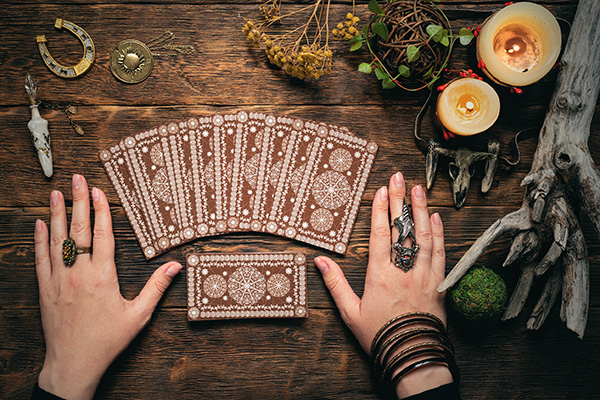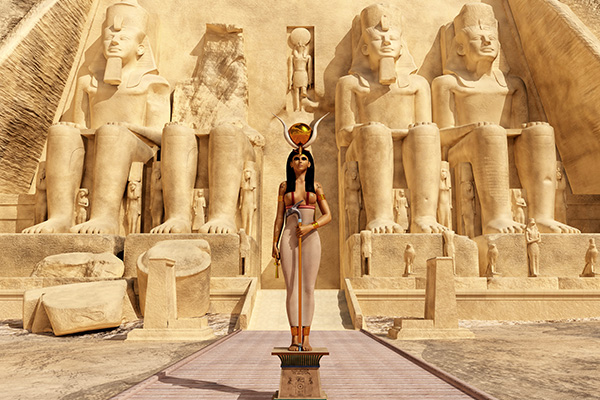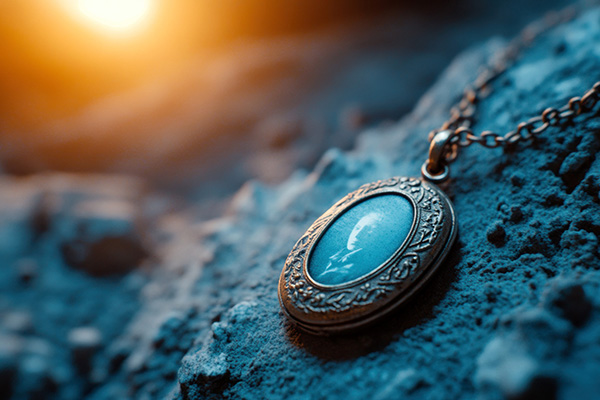occult
The History And Hidden Blessings Of Halloween

As a child, I remember getting excited about dressing up as a witch on Halloween and enjoying all the treats, like toffee apples and spooky cakes, that my mom used to make.
But one year, my father ruined the holiday for me when he explained his views on the significance of Halloween to me. I was just 10 years old, and it upset me.
Because of his religious beliefs, my father then forbade my siblings and me from celebrating Halloween. This made us feel excluded from our community as we watched other children dress up and enjoy themselves.
As an adult, I learned that it was not the event itself that was the issue, but rather the assumed F.E.A.R. behind it: False Evidence Appearing Real.
Remembering those times recently, I was prompted to take another look into the origin of this holiday tradition and what it truly stands for.
On 31st October each year, the Celtic pagan festival known as Samhain is celebrated, symbolizing the end of the harvest period and the start of the winter season, sometimes referred to as the “darker half” of the annual 12-month cycle.
Long before it became a night of costumes and candy, it was a sacred festival rooted in ancient spiritual tradition. The celebration we now know as Halloween traces its origins to Samhain (pronounced Sow-in), a Gaelic festival that marked the end of the harvest and the beginning of the dark half of the year.
Power And Protection From Your Ancestors
 I come from a long line of female herbalists of European origins on my mother’s side of the family. They were seers, healers, and prophets who combined their psychic gifts with ancient healing practices. Today, they still come to me during meditation, to offer wisdom.
I come from a long line of female herbalists of European origins on my mother’s side of the family. They were seers, healers, and prophets who combined their psychic gifts with ancient healing practices. Today, they still come to me during meditation, to offer wisdom.
The family’s mainly Germanic connection is one I’ve researched for many years, but more recently I discovered that my ancestors crossed into Scandinavian and Norse territories too, which suggests a bloodline of fierce women who were warriors of their time.
It’s really not surprising to me, as even my own mother today, who is 84 years old, can still kick anyone’s butt who crosses her path in an unkind way! I always knew she was strong when I was little, and I always admired her power and independence.
I was born in the year 1966, which in Chinese Astrology equates to the year of the Fire Horse. Fire Horse people are only born once every six decades. It is a rare sign and, according to legend, many girl babies born in certain parts of Asia in that year were killed at birth, because they were believed to be dangerous, uncontrollable or resistant to rules or dogma.
My Fire Horse nature shows up in me from time to time, but only when I’m really pushed beyond reason by someone who is taking advantage of, or harming me, or my children.
Life will sometimes push us to step into our core strength and fight for what is right. There are many people on the spiritual path who feel stepping into your true power or fighting for what is right is ‘unspiritual’ or egotistic.
How To Choose Your First Tarot Deck
 Buying your first deck of tarot cards can be daunting, especially for beginners. However, when approached the right way, it can be a magical and enjoyable experience.
Buying your first deck of tarot cards can be daunting, especially for beginners. However, when approached the right way, it can be a magical and enjoyable experience.
I remember when I decided to buy my first deck years ago. I received a flood of recommendations from well-meaning friends and seasoned readers, all eager to point me toward their personal favorites.
True to my rebellious nature, though, I ignored it all. Instead, I followed my intuition.
I visited a cozy metaphysical shop downtown and wandered to the back, where the tarot decks were displayed on a few revolving racks.
One particular deck instantly captivated me. It had an angelic theme, and even though the imagery and Roman numerals weren’t exactly beginner-friendly, I didn’t care. I knew instantly that it was mine.
Even though I was new to Tarot, I had immersed myself in as much knowledge as I could find before purchasing my first deck. I read every book I could get my hands on and spent hours combing through spiritual forums and metaphysical blogs.
The advice I received from seasoned readers, though sometimes conflicting, gave me a broad foundation of ritual practices and deck care.
I was especially drawn to the idea of treating the cards as sacred tools, rather than just objects. So, by the time I brought my new deck home, I already had a sense of how I needed to honor it and energetically align with it.
What I Learned From Egyptian Goddess Hathor
 From the moment I first encountered her, Hathor, the ancient Egyptian goddess, she felt like a luminous companion on my spiritual path.
From the moment I first encountered her, Hathor, the ancient Egyptian goddess, she felt like a luminous companion on my spiritual path.
To me she isn’t just a myth or a symbol. She’s a living presence and a spiritual guide. She’s also a gentle yet powerful presence in my psychic and healing work. Her energy speaks to me on a deeply intuitive level.
My connection with Hathor began unexpectedly while reading a book on ancient Egypt. Suddenly, I felt a comforting warmth surround me. It was as if a long-lost friend had returned.
Then, I was guided to raise my hands, palms facing outward and I sensed her hands and palms facing mine. A glow of golden light flashed before me and I felt a warm sensation entering my palms and almost as though my hands were being supported and held, and all time was suspended.
In that timeless and powerful moment, Hathor’s nurturing love enveloped me, and her ancient wisdom whispered that time is merely a construct.
In the Infinite Light, there is no past or future, only this sacred now. In is in the present moment that healing and miracles unfold.
As a psychic, I find that Hathor naturally aligns with my practice. She is not just the goddess of love and beauty, though she radiates both. She embodies a vibrant, nurturing energy that opens emotional and spiritual channels.
The Power Of Knowledge In Psychic Development
 People often ask me what it’s like to be psychic — how I developed my abilities and how it all works. They’re curious about what goes on behind the scenes.
People often ask me what it’s like to be psychic — how I developed my abilities and how it all works. They’re curious about what goes on behind the scenes.
One of the most common questions I get is whether psychics are born with their abilities or if they develop it over time.
From my experience, and from speaking with others in the field, I’d say most psychics are born with their gifts. These abilities are often present in childhood, even if they aren’t fully recognized at the time. However, some people awaken their psychic awareness later in life — often after a profound experience or a period of deep spiritual exploration that helps them access their latent gifts.
In most cases, those who develop their abilities later in life have always had a level of psychic awareness but didn’t recognize it because they weren’t paying attention. Society tends to dismiss psychic phenomena, causing many to suppress or ignore their intuitive senses until something triggers their awakening.
Not everyone with psychic potential chooses to develop it. Some find it overwhelming or even frightening. It can be unsettling to see visions, hear voices, or know and sense things that others don’t. Without proper guidance, these experiences can be confusing and intimidating.
Some people also fear standing out or being judged — skepticism around psychic phenomena can make it difficult for people to openly embrace their abilities. It takes courage to acknowledge one’s gifts and use them in ways that benefit both yourself and others.
The Cautionary Tale Of The Lovestruck Witch
 Once upon a time, there was a goodly witch named Wanda. Though she sometimes had a fiery temper, her heart was generally in the right place.
Once upon a time, there was a goodly witch named Wanda. Though she sometimes had a fiery temper, her heart was generally in the right place.
For many years, Wanda lived a cozy life with her partner, Colwyn the Brave, in a happy and fulfilling relationship.
But one day, out of the blue, Colwyn announced that he was ending the relationship. Although he still loved Wanda, he explained that he no longer had the romantic or emotional feelings necessary to sustain the relationship.
But Wanda was no fool. Fee-fi-fo-fum, she knew by the prick of her thumb…that he was lying through his teeth! The truth was that he had decided to dump her for her so-called best friend, Suvanna the Enchantress.
Wanda was devastated. She had dedicated more than two decades of her life to this man, standing by him through thick and thin. And her friend’s betrayal only added further insult to injury.
Realizing the extent of the pain he had caused, Colwyn tried to comfort Wanda, assuring her that one day she would meet someone who would make her much happier than he ever had.
But his words fell on deaf ears. Wanda was heartbroken and very, very angry.
Then she remembered…she was a witch. She could make things happen, especially with the help of her sisterhood of witches.
